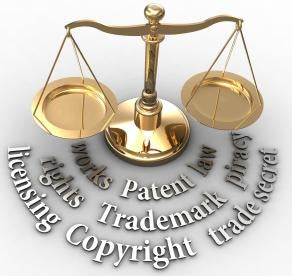In VISUAL MEMORY LLC v. NVIDIA CORPORATION, dated August 15, 2017, the Federal Circuit found an improved memory system to be patent eligible under 35 U.S.C. Sec. 101, despite the fact that the improvement resides at least in part in the form of programmable features. More particularly, the patent in question, U.S. Patent No. 5,953,740, owned by Visual Memory, LLC, provides a memory system with programmable operational characteristics that can be tailored for use with multiple different processors without a reduction in performance. It discloses a main memory 12 and three separate caches: internal cache 16, pre-fetch cache 18, and write buffer cache 20. Id. at col. 3 ll. 34–53. A schematic of the ’740 patent’s memory system is shown in Figure 1. The three caches possess programmable operational characteristics that are programmable based on the type of processor connected to the memory system. The ’740 patent’s main memory constitutes an advance over the prior art fast page mode memory because it is divided into pages containing either code or non-code data, and “the system provides a bias towards code pages or non-code pages depending upon the type of processor connected to the system.” Id. at col. 4 ll. 55–58. For one processor type, the register will hold the address of the most recently accessed code page; for another processor type, the register will hold the address of the most recently accessed non-code page. The specification discloses that combining the selective open page bias with the fast page mode offers faster access to main memory and increases system performance. Id. at col. 5 ll. 6–8. Taken together, the “multiple mode operation” of the ’740 patent confers a substantial advantage by “allow[ing] different types of processors to be installed with the [same] subject memory system without significantly compromising their individual performance.” Id. at col. 5 ll. 25–29.
The ’740 patent’s claims reflect these technological improvements. For example, claim 1 recites:
1. A computer memory system connectable to a processor and having one or more programmable operational characteristics, said characteristics being defined through configuration by said computer based on the type of said processor, wherein said system is connectable to said processor by a bus, said system comprising:
a main memory connected to said bus; and
a cache connected to said bus;
wherein a programmable operational characteristic of said system determines a type of data stored by said cache.
The district court had concluded that the claims were directed to the “abstract idea of categorical data storage,” which humans have practiced for many years. Visual Memory LLC v. NVIDIA Corp., No. 15-789, 2016 WL 3041847, at *4 (D. Del. May 27, 2016). The court’s step-two analysis found no inventive concept because the claimed computer components—a main memory, cache, bus, and processor—were generic and conventional. The ’740 patent’s programmable operational characteristics did not provide the inventive concept, according to the court, because they represent generic concepts that determine the type of data to be stored by the cache, and the patent fails to explain the mechanism for accomplishing the result. Id. at *7.
Two recent cases informed the Federal Circuit’s evaluation of whether the claims are “directed to” an abstract idea. The court noted that, In Enfish, it had held “claims reciting a self-referential table for a computer database were patent-eligible under Alice step one, because the claims were directed to an improvement in the computer’s functionality.” Id. at 1336. They explained that “the plain focus of the claims in Enfish was on an improvement to computer functionality itself, not on economic or other tasks for which a computer is used in its ordinary capacity.” Id.
Similarly, the court noted that in Thales, it had determined that claims reciting a unique configuration of inertial sensors and the use of a mathematical equation for calculating the location and orientation of an object relative to a moving platform were patent-eligible under Alice step one. Inertial sensors in prior art systems measured motion relative to the earth and were prone to computational errors. Thales, 850 F.3d at 1345. The patented system achieved greater accuracy than these prior art systems by measuring inertial changes of the tracked object relative to the moving platform’s reference frame. Id.
With these guideposts in mind, and cognizant of the difficulty inherent in delineating the contours of an abstract idea, the Federal Circuit found that the ’740 patent claims demonstrates that they are directed to an improved computer memory system, not to the abstract idea of categorical data storage. For example, the court pointed out that “[c]laim 1 requires a memory system “having one or more programmable operational characteristics, said characteristics being defined through configuration by said computer based on the type of said processor,” and “determin[ing] a type of data stored by said cache.” ’740 patent col. 6 ll. 29–38.
The specification explains that multiple benefits flow from the ’740 patent’s improved memory system. As an initial matter, the specification discloses that a memory system with programmable operational characteristics defined by the processor connected to the memory system permits “different types of processors to be installed with the subject memory system without significantly compromising their individual performance.”
The court further said “[a]s with Enfish’s self-referential table and the motion tracking system in Thales, the claims here are directed to a technological improvement: an enhanced computer memory system,” despite that the concept of categorical data storage underlies the ’740 patent’s claims in that claim 1 requires a programmable operational characteristic that “determines a type of data stored by said cache,” because “all inventions at some level embody, use, reflect, rest upon, or apply laws of nature, natural phenomena, or abstract ideas.” Mayo, 566 U.S. at 71; see also Alice, 134 S. Ct. at 2354 (“[A]n invention is not rendered ineligible for patent simply because it involves an abstract concept.” (emphasis added)). Nor is the ’740 patent’s use of conventional computer components, by itself, fatal to patent eligibility where the claims “are directed to an improvement in the functioning of a computer.” Enfish, 822 F.3d at 1338. Because we conclude that the claims of the ’740 patent are not directed to an abstract idea, we need not proceed to step two of the Alice test.



 i
i

